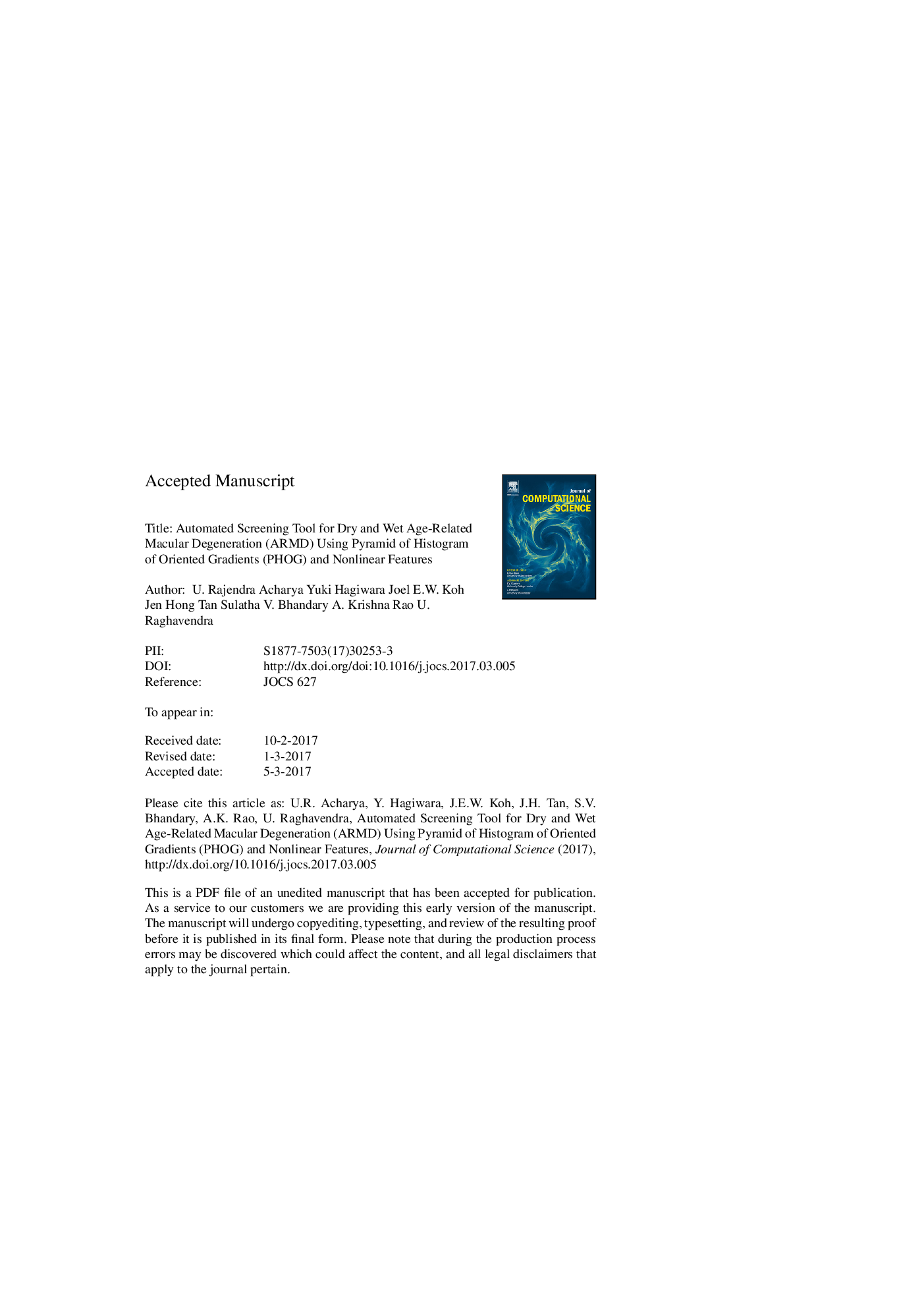| Article ID | Journal | Published Year | Pages | File Type |
|---|---|---|---|---|
| 4951024 | Journal of Computational Science | 2017 | 39 Pages |
Abstract
Aging is the prime cause of age-related macular degeneration (ARMD). There are primarily two types of ARMD: (i) dry, and (ii) wet. The dry ARMD is the common form of ARMD. It typically starts with the formation of small pale yellowish deposits called drusen under the retina, causing atrophy at the macula, which is known as age-related macular degeneration. This, in turn, affects the central vision of a person. The wet ARMD is caused due to the abnormal growth of blood vessels under the retina. These vessels are known as the choroidal neovascular membrane break through the retina and bleed. They finally lead to either scarring at the macula or atrophic changes leading to severe visual impairment. Hence, the wet ARMD progresses faster and leads to an irreversible loss of sight. Therefore, it is advisable to go for routine eye screening, especially for elderly subjects. Although the ARMD cannot be fully cured, an accurate early detection can impede the progression of vision loss. However, manual diagnosis of ARMD is difficult and subjective. Thus, a computer-aided diagnosis (CAD) system can be utilized to automatically screen the eyes and give an accurate diagnosis of the type of ARMD. In this study, we propose a novel technique to identify normal, dry, and wet ARMD. A total of 945 fundus images (404 normal, 517 dry ARMD, and 24 wet ARMD) are used in this proposed framework. The Pyramid of Histograms of Orientation Gradients (PHOG) technique is implemented in this work to capture the subtle changes in the pixels of fundus images. Various nonlinear features are extracted from the PHOG descriptor. To balance the number of images in three classes, an adaptive synthetic sampling (ADASYN) approach is used. Two feature selection techniques namely ant colony optimization genetic algorithm (ACO-GA) and particle swarm optimization (PSO) are used to select the best performing method. The selected features are subjected to analysis of variance (ANOVA) to determine highly significant features for classification. The proposed system has achieved a maximum accuracy of 85.1%, sensitivity of 87.2%, and specificity of 80% using nine features selected by PSO feature selection method with support vector machine (SVM) classifier. It has obtained a maximum accuracy of 83.3%, sensitivity of 82.6%, and specificity of 84.8% using ten features selected by ACO-GA feature selection method with SVM classifier. The proposed CAD system yielded promising performance and thus, can be used as a practical adjunct ARMD screening tool in the clinical setting.
Keywords
Related Topics
Physical Sciences and Engineering
Computer Science
Computational Theory and Mathematics
Authors
U. Rajendra Acharya, Yuki Hagiwara, Joel E.W. Koh, Jen Hong Tan, Sulatha V. Bhandary, A. Krishna Rao, U. Raghavendra,
